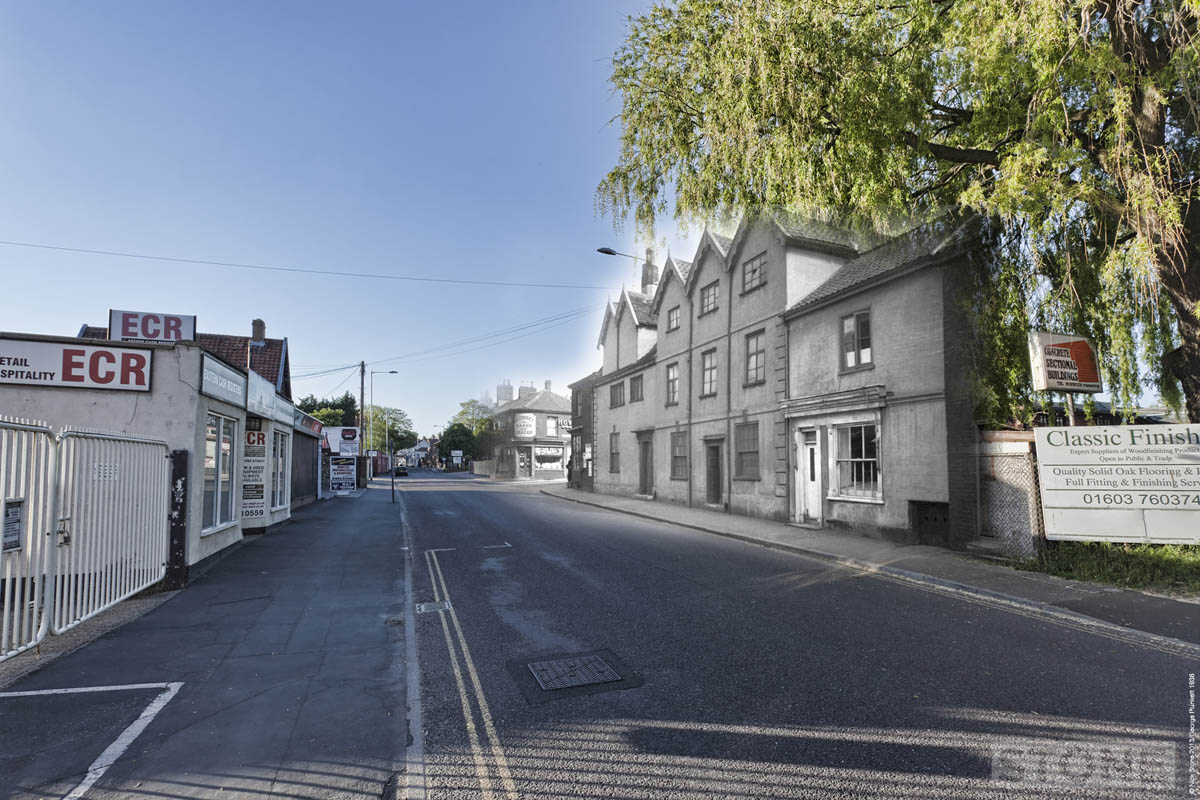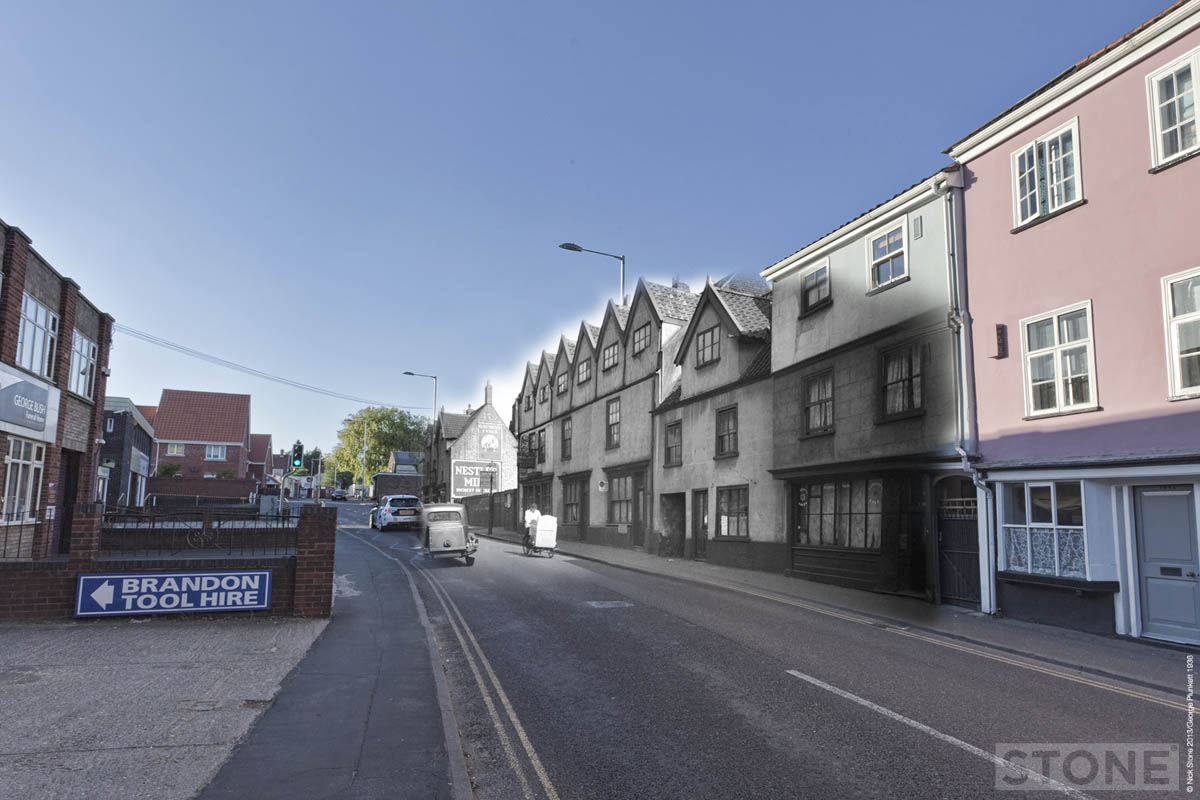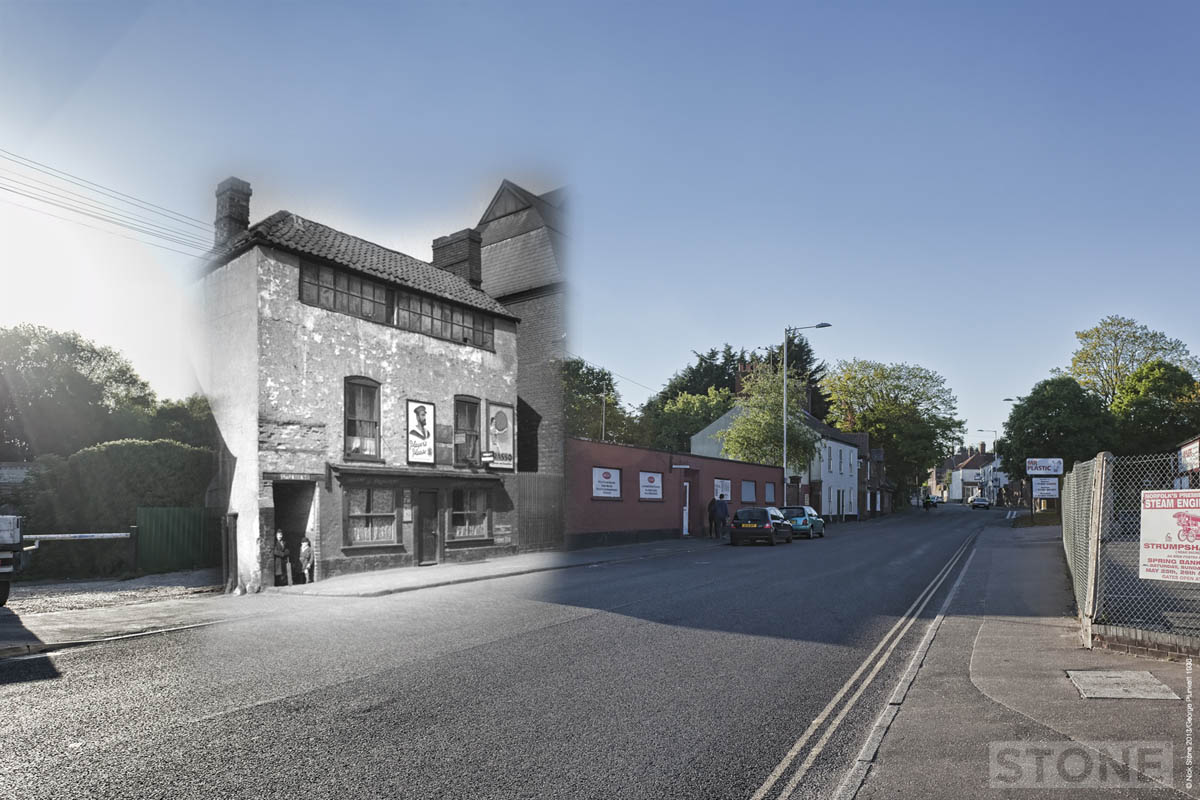106 to 114 Oak Street, when George Plunkett pounded the streets in 1936 snapping away at the other end of the time tunnel, these rather lovely Tudor houses were still there, then a period of massive vandalism occurred during which Norwich reshaped itself, partly with the assistance of the Luftwaffe, which had a deleterious effect on some of Oak Street (more of which another time). But also an act of corporation grossness which had already started to delete various ‘slum tenements’ mostly around the yards of the North part of the city, as well as around Ber Street. There are still yards here in this block in the gables house.
This area was always quite poor and featured a few weavers windows and a Maltings and a surviving Great Hall, the footprint of which can still be seen in part further up, also the dearth of pubs and ex-pubs along Oak Street is something quite jaw dropping, Some are remember in the names of new developments that have started to creep back up the road some 80 years after large bits of it were removed.
The road itself used to carry on down to Anchor Key and Coslany, had it’s own gate in the City Wall (the one remaining safe one that the King’s troops exited from when they went after Robert Kett) and was a main road into this ancient semi-industrialised riverside area. The ribbon of asphalt that forms the inner link road of St Crispins cut through that, truncating the Poor School houses at the bottom of the hill and finished it, it’s now a way to get onto the Ringroad to join the endless circumvention of the city centre. While I was down there at least I momentarily had a ha’penny cornet.
Oak Street again, this time the corner of Sussex Street, an interesting Street in itself with it’s row of large merchant’s houses, now split into flats and a row of tidy terraces, echoing back to a past that Norwich across the water has lost somehow. This row again vanished in a combination of being near derelict clearance and bomb damage. The site was for years after this a factory, I think I once bought some foam from here, now a rubble field waiting for developers to dip their hands in their bank accounts and build something.
Similar to the last one, better view. This is now a fairly unattractive car yard.
The Little Buck Public House, 141 Oak Street was right next to the S&P Maltings on Oak Street. Built in the 1700s it was lost during the night of 27th/28th April 1942 when a 500kg exploded opposite. It’s now the site of the inventively named “Salad Dodgers” burger van and Mitchell’s reclamation Yard. The Maltings is part of the yard, or what’s left of it is. Back then it would have been a landmark with the tall vents visible across the city.
Photos all © Nick Stone. Original Photos used with kind permission of Jonathan Plunkett from his father George Plunkett’s collection.





My Grandmother lived at 112 Oak st. She said her mum and dad had a fruit and flowers shop. She would have been 11 when that picture was taken in 1936.
I live in South Australia. My father was born in 1899 at 150 Oak Street. I am interested to know if any of the pictures on this page represent what the dwelling would have been like. I was in Norwich on holiday several years ago and I remember walking down that street looking for the address, but to no avail. From memory, most of the buildings were being used for industrial and/or commercial purposes.
Any comments would be appreciated.
Hi my grandfather lived in 38 Oak Street i was wondering if any of these images are of his house looking forward to seeing his home hopefully it still standing